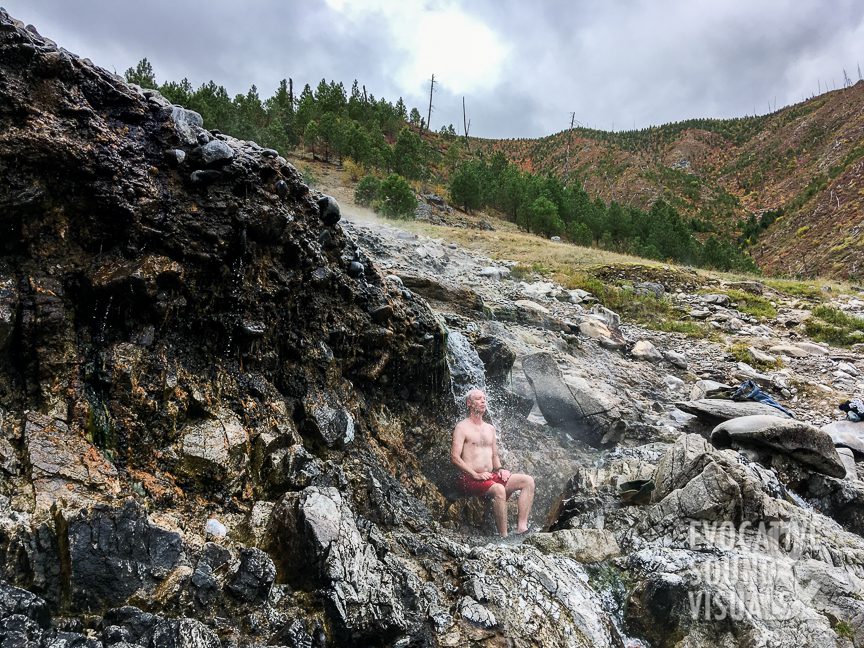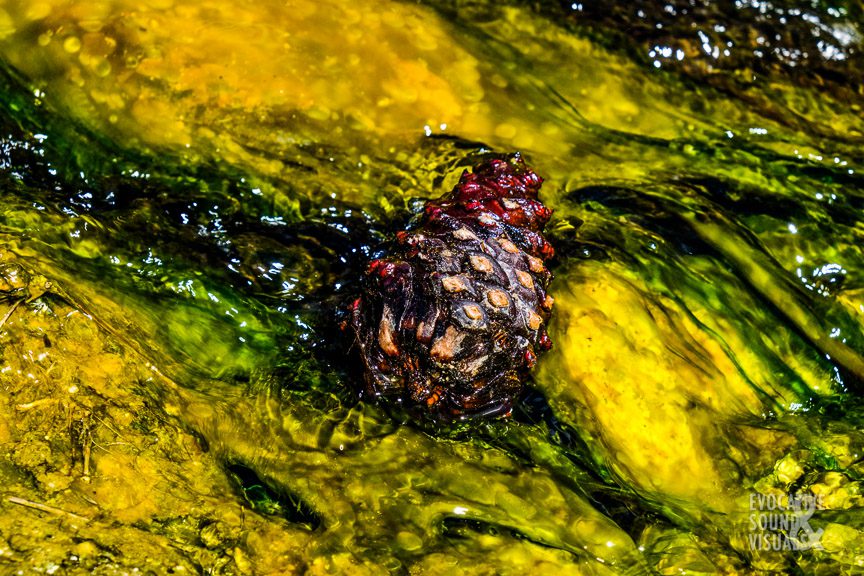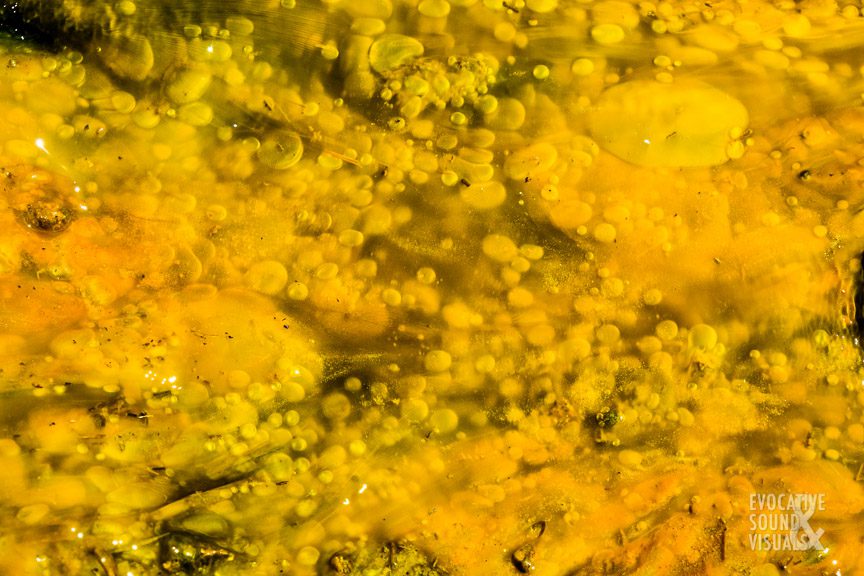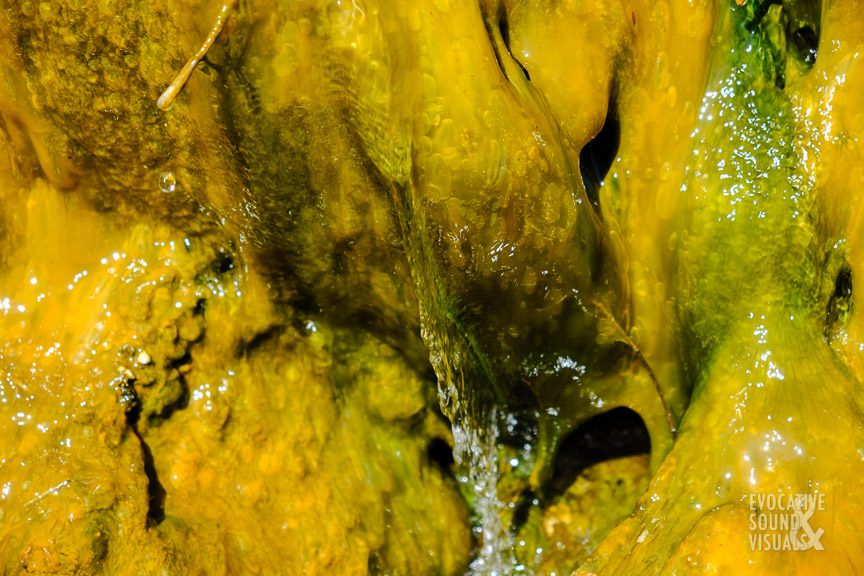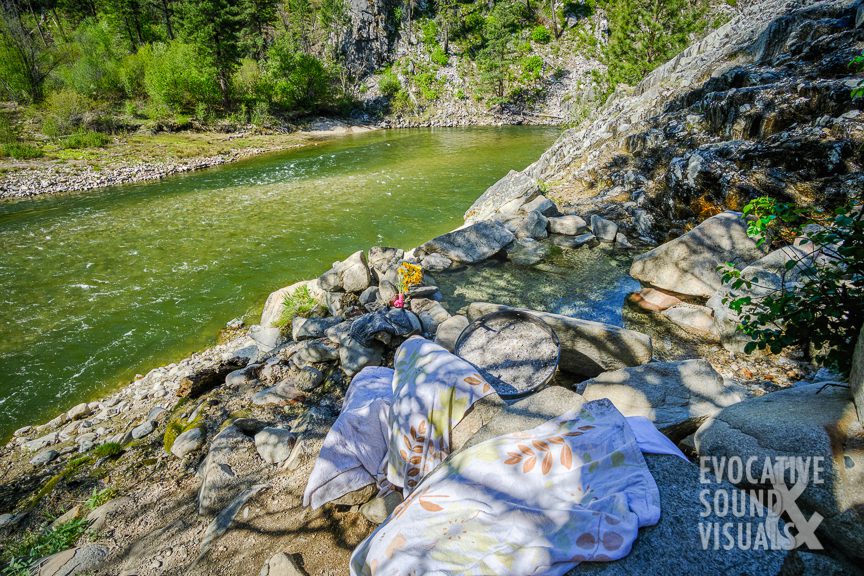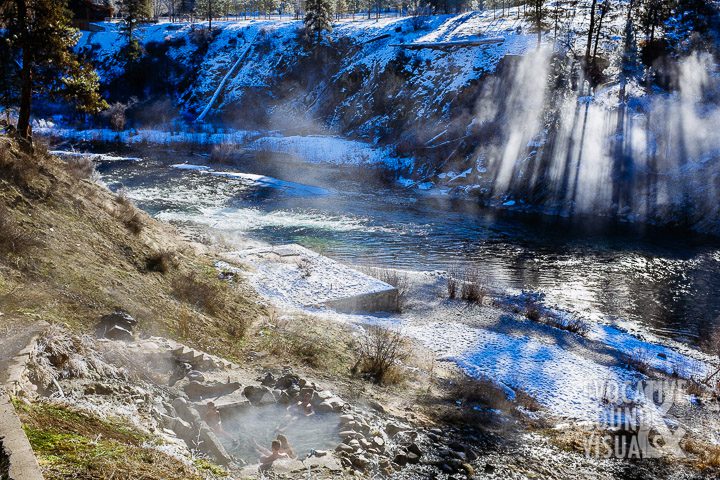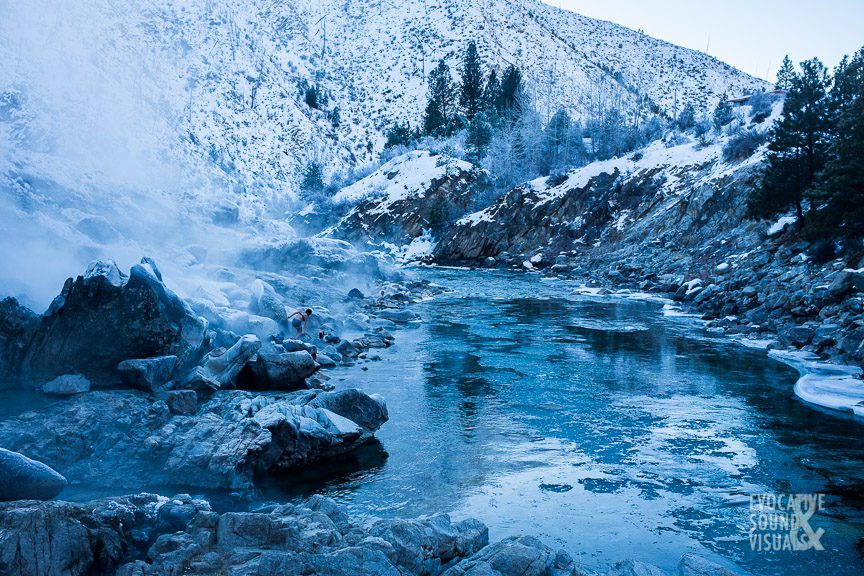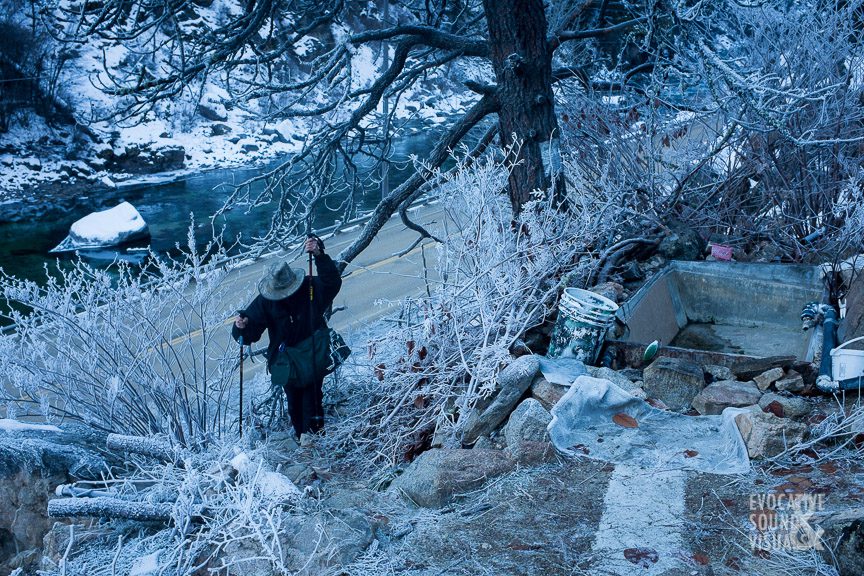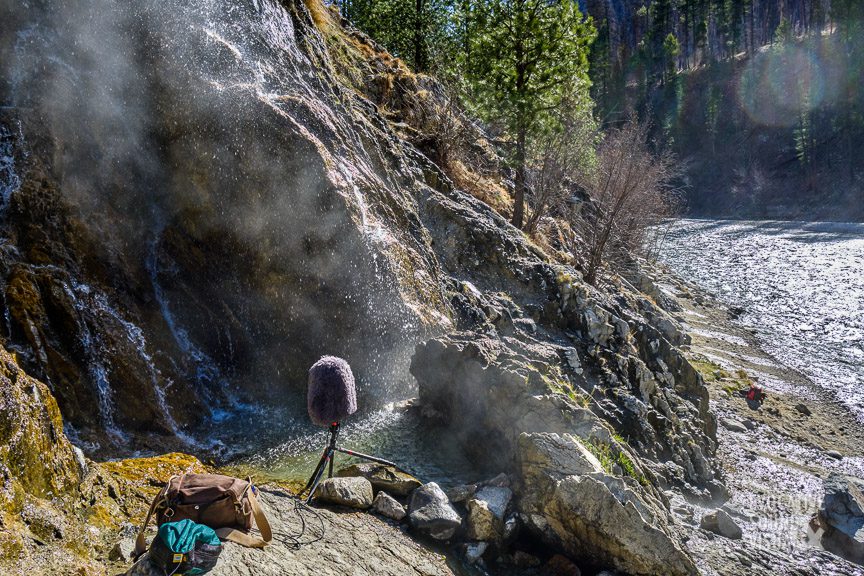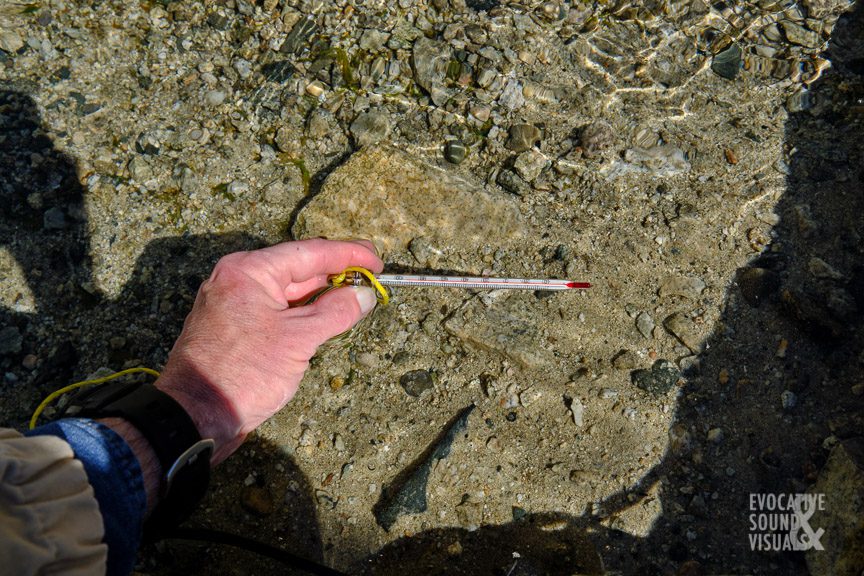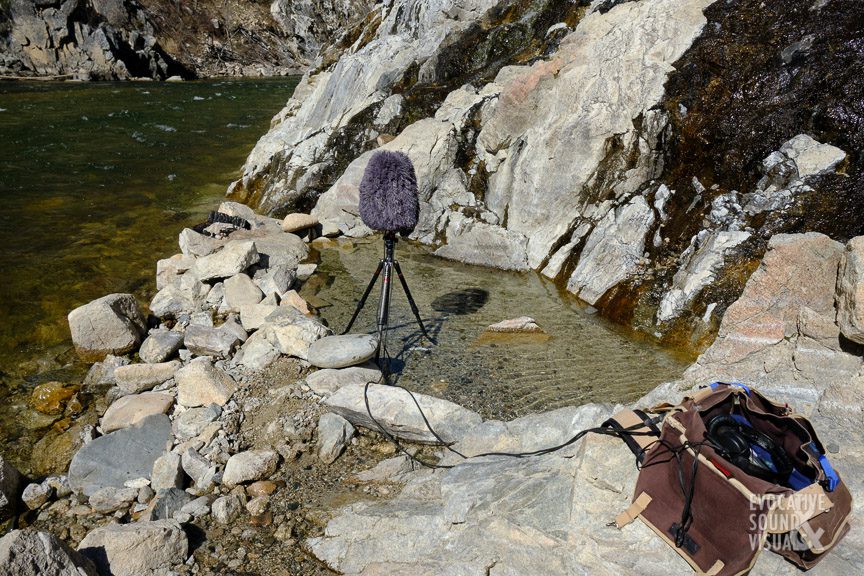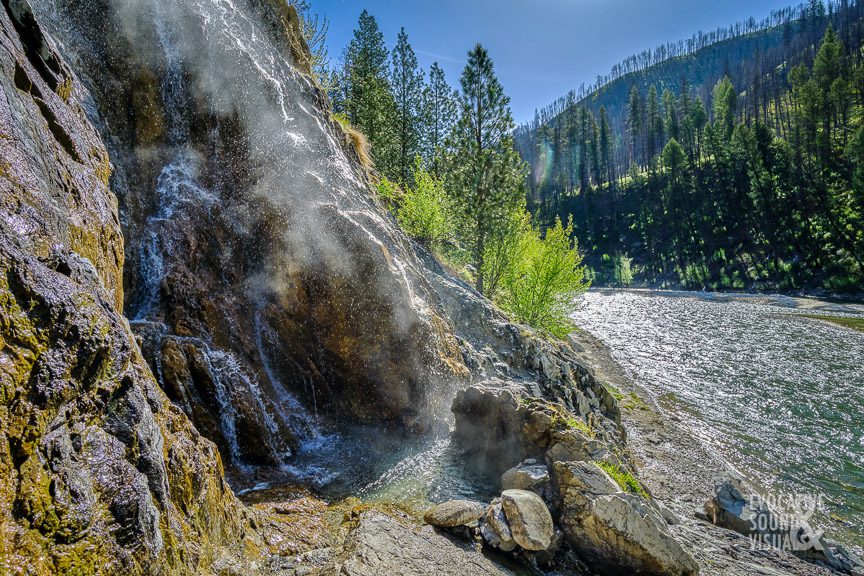
Grab your swim trunks or bathing suit, turn your thermostat up to 100 F (38 C) and prepare to immerse yourself in the soothing soundscape of Pine Flats Hot Springs, a natural hydrothermal spring featuring an intimate cliffside soaking pool. Pine Flats is tucked deep inside the Boise National Forest 3,700 feet (1,097 meters) above sea level along the South Fork of the Payette River in south-central Idaho. It’s the middle of April, and the outside temperature at 9 a.m. is 52 F (11 C). The skies above are Cobalt-blue, with puffs of wispy thin clouds wafting past.
Pine Flats Campground is closed for the season. No matter. This hot spring, like many of the 130 or so soakable hot springs throughout the state, is free and open year-round. You’re the first one to arrive. Getting up early really is worth it. A smile comes over your face knowing that for a short time, you have this place all to yourself.
You park outside the locked day-use swing gate and begin the 5/8 mile hike to the soaking pool. Up and down you go along a well-worn zigzagging trail that mimics the contours of the blue-green river on your left. You’re walking under a canopy of coniferous evergreen trees, Douglas fir, ponderosa and lodgepole pine. Some of these have come down over the winter. Big ones, too. High winds and heavy snow are the culprits. You climb over them the best you can, like a hurdler, eyes focused on a relaxing finish line.
Fire Damage
The Pioneer Fire swept through here in 2016. Evidence of its destruction, over 180,000 acres, is all around, especially on the south side of the river. Towering trees blackened and burned like spent matchsticks standing naked up and down the snow-packed, 7,000-foot (2,130 meters) mountainside. In contrast, around you, the ground is as dry as a summer’s day. Hydrothermal waters flow downhill in little streams along your path see to that.
After an easy 15-minute hike, you’re there. Before you, water from deep within the earth cascades down a jagged yellowish-green algae-stained cliff and blends with the cold river rushing by. Things begin to heat up. Steam is in the air. Why did you bring that winter coat when all you needed was a T-shirt?
Instead of heading straight for the pool like so many others, you choose a different path. You trudge higher than the source of the hot springs, way above the pool even. You’ve come to take in the entire soundscape, along with a soak, of course.
Have a seat on the rocks – find a smooth one – overlooking the river, which flows left to right 200 feet (61 meters) below. At this height, hear how the river sounds in concert with the steep terrain. The ambient temperature is 46 F (8 C).
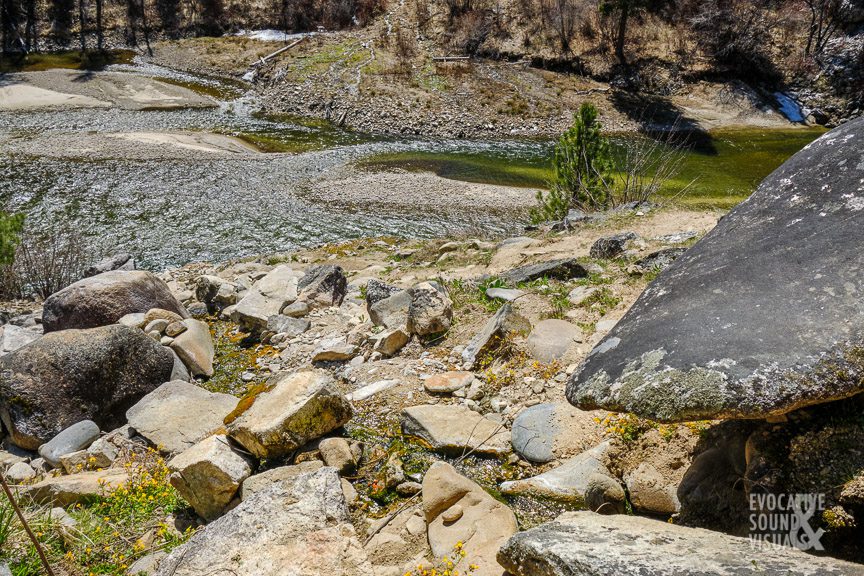
Class II rapids course through here, the Canyon section of the river. Yet, just upstream and quickly downstream, rapids with names like Oxbow (Class III), Gateway (Class IV) and Lone Pine (Class IV) make for intense whitewater rafting. A 25-foot (7.6 meters) waterfall, Big Falls, creates Class VI rapids, calling for a mandatory portage.
Next, come down to the source of the hot springs. A lizard-like critter scurries past and slides behind a rock. It’s awfully hot right here, but it feels good against the mountain air. Scalding water trickles out of the earth at 138 F (59 C). Not to worry, the water cools, slightly, as it flows down the rocks toward the soaking pools.
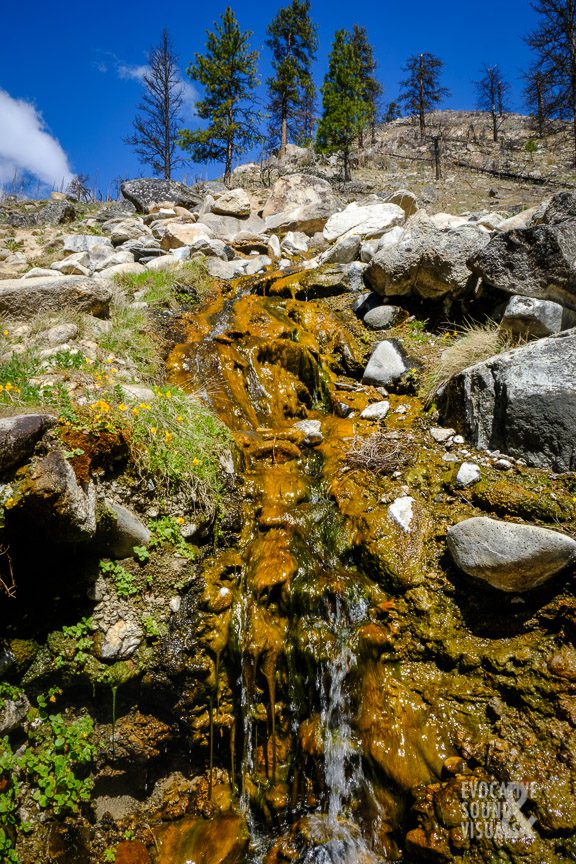
Now, walk downhill some more, stepping over scalding water that flows past in little streams and waterfalls. At this spot, water flows past at 120 F (49 C).
You’ve reached the cliffside soaking pool. Hurray! Slide in. Sink low and relax in the hot shower bath. Listen as the waterfall pours down upon your head and splashes all around. The soaking temperature is 97 F (36 C).
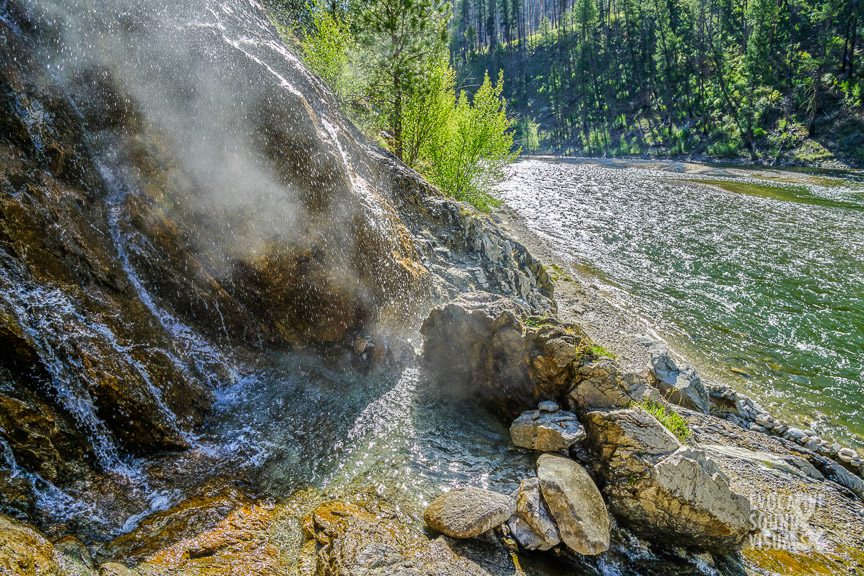
Time to get out for a while. Come downhill, next to a widening stream closer to the river. Water trickles down slick rocks at 89 F (32 C).
You’ve reached the bottom pool situated along the river’s edge. Like the larger pools above, volunteers, known among themselves as ‘keepers,’ have created this shallow pool by placing cobbles and small boulders in a loose circle. Hydrothermal waters mix with 38 F (3 C) river flow, which seeps into cracks between rocks for a soaking temperature of 87 F (31 C).
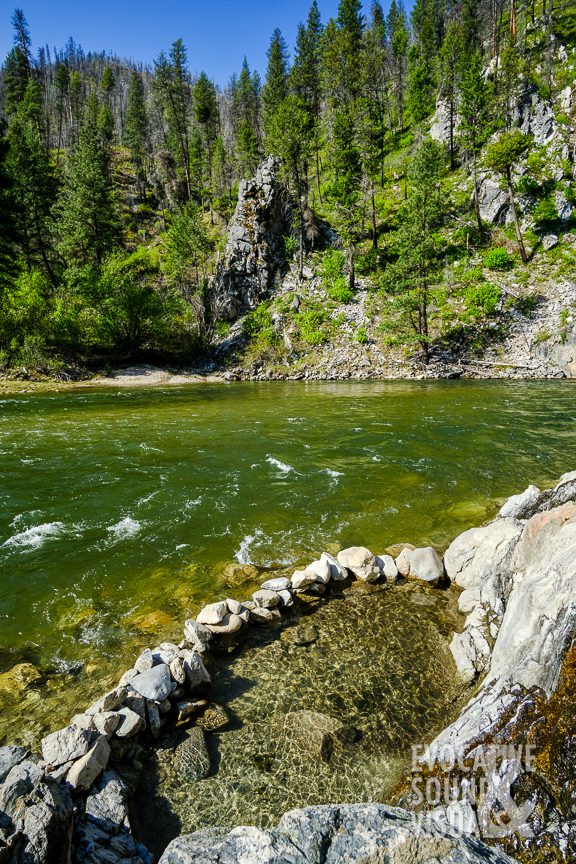
Pack It In, Pack It Out.
Your clothes are back on and it’s time to leave, right? Not quite. Pack it in. Pack it out. Keeping this and every hot spring clean benefits everyone. Below, is an example where soakers chose not to respect the area. I helped haul these towels and other items to the trailhead and an awaiting dumpster.
Getting Here
Pine Flats Hots Springs is along the Banks-Lowman Road, Highway 21, in between, you guessed it, the tiny towns of Banks and Lowman, Idaho. This is a windy road with beautiful views that look out through steep canyon walls and down into raging rapids.
Nearby Hot Springs (There are Many)
It should go without saying that winter is the best time of year to visit Idaho’s hot springs. One added advantage of traveling in the cold months is that you see steam coming out of the ground along the road. Unnamed hot springs can be ‘discovered’ this way. Locals would have you keep this knowledge to yourself.
I work hard to research and provide readers with informative links, and will on occasion promote via affiliate links products I use and trust. As an eBay Partner Network associate, I may receive a commission for purchases made through these links when you click on them. I greatly appreciate it.
Further Reading and Resources
- This detailed link from Idahohotsprings.com lists more places to soak nearby and throughout the state, including commercial hot springs. It allows readers to rate the visit, including the amount of litter present.
- I own a great little paperback picked up at a little free library in Boise entitled Hot Springs and Hot Pools of the Northwest, ‘93-’94 edition, by Jayson Loam and Marjorie Gersh. It lists Pine Flats and more. And by more I mean topless soakers, much to my surprise. Copies can still be purchased. I see them on eBay. I’m keeping mine.
- Learn more about the Idaho Batholith, the source of all the pent-up geothermal energy that produces these wonderful soakable hot springs. This site, Wichersham’s Conscience, goes into geological detail, plus it shows Kirkham Hot Springs, upriver from Pine Flats. It is, for better or worse, the most visited natural hot springs in the state. Here is another informative resource put out by Idaho State University
- Learn more about the 2016 Pioneer Fire with a U.S. Forest Service map here and information here.
- This map, produced by the U.S. Bureau of Land Management, features whitewater classes along the river.
- To take temperature readings, I used a vintage glass thermometer with a red-colored gauge that only went up to 120 F (49 C). How did I know how hot the source of Pine Flats Hot Springs is? I used this website by NOAA.
How I Made This
This 55-minute, 42-second album was recorded on April 16, 2021. A Sound Devices 702 recorder was used to capture high-definition audio at 96 kHz/24 bit. The album was then re-sampled to CD quality (44kHz/16bit). To recreate a truly immersive stereo image, a binaural stereo head was used, featuring Clippy EM 172 omnidirectional microphones positioned just inside the pinna of each artificial ear. For audio collected at the soaking pool, a pair of Aquarian H2a-XLR hydrophones were used in addition to the binaural head. This helps give the impression that your head is right above the waterline. Which is nice. Throughout the recording, the head was placed as close to the water as possible, always facing the river, which runs left to right, or east to west.
In addition to taking temperature readings, I took sound pressure level readings, A-weighted decibels, with a vintage but still highly accurate Bruel & Kjaer 2225 integrating sound level meter, up and down the cliff. Here are those readings from top to bottom:
- 1st recording location (at the top) – 46 dBA
- 2nd recording location – 57 dBA
- 3rd recording location – 60 dBA
- 4th recording location (the soaking pool) – 75 dBA
- 5th recording location – 71 dBA
- 6th recording location (at the river’s edge) – 66 dBA
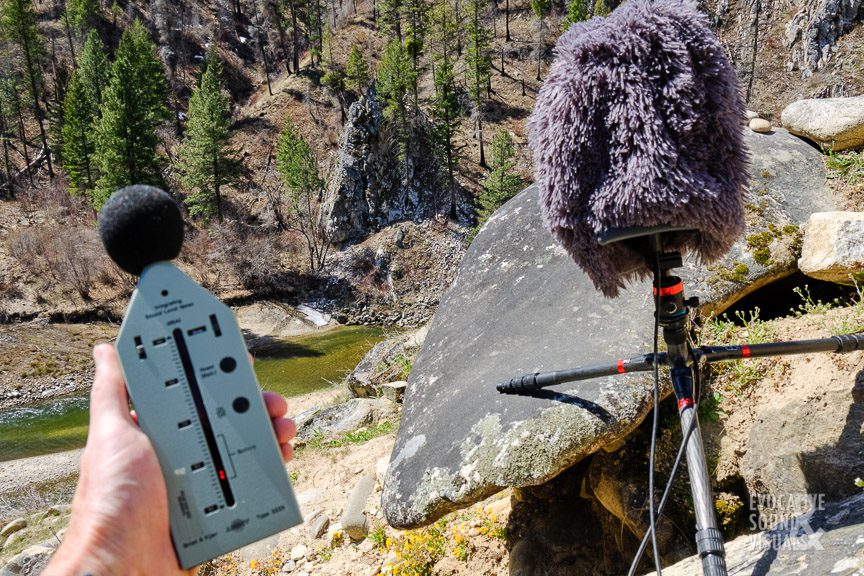
What do these numbers mean?
If you’re in your kitchen reading this, your refrigerator runs at around 50 dBA. If you’re reading this while in a car, a passenger hopefully, the sound while driving, with the windows down, is around 70 dBA. Now imagine replacing that refrigerator hum and annoying road noise with the relaxing sound of cascading hot springs water. There you have it.
See this page by the FAA on the fundamentals of noise and sound, which includes an SPL chart.
